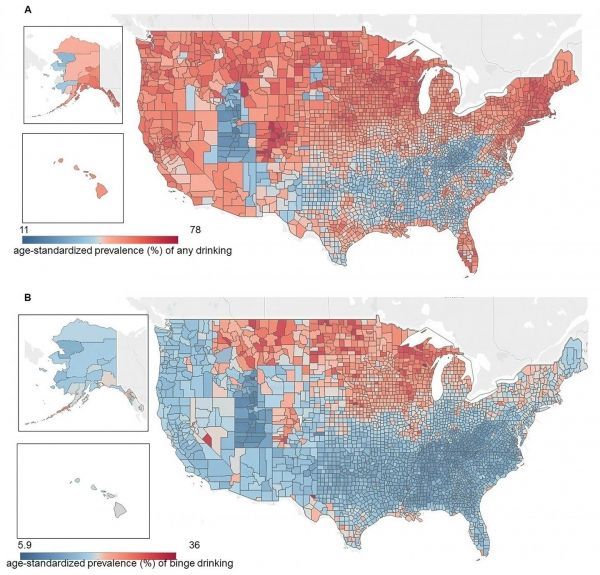Where you live could influence how much you drink. According to new research from the University of Pittsburgh Division of Gastroenterology, people living in colder regions with less sunlight drink more alcohol than their warm-weather counterparts.
The study, recently published online in Hepatology, found that as temperature and sunlight hours dropped, alcohol consumption increased. Climate factors also were tied to binge drinking and the prevalence of alcoholic liver disease, one of the main causes of mortality in patients with prolonged excessive alcohol use.
“It’s something that everyone has assumed for decades, but no one has scientifically demonstrated it. Why do people in Russia drink so much? Why in Wisconsin? Everybody assumes that’s because it’s cold,” said senior author Ramon Bataller, M.D., Ph.D., chief of hepatology at UPMC, professor of medicine at Pitt, and associate director of the Pittsburgh Liver Research Center. “But we couldn’t find a single paper linking climate to alcohol intake or alcoholic cirrhosis. This is the first study that systematically demonstrates that worldwide and in America, in colder areas and areas with less sun, you have more drinking and more alcoholic cirrhosis.”
Alcohol is a vasodilator – it increases the flow of warm blood to the skin, which is full of temperature sensors – so drinking can increase feelings of warmth. In Siberia that could be pleasant, but not so much in the Sahara.
Read more at University of Pittsburgh Schools of the Health Sciences
Image: This is the incidence of all (top) and binge (bottom) drinking across counties of the United States. (Credit: Ventura Cots et al. (2018). Hepatology, doi: 10.1002/hep.30315. Copyright John Wiley and Sons.)


